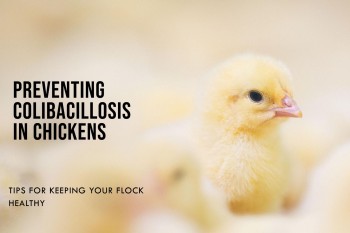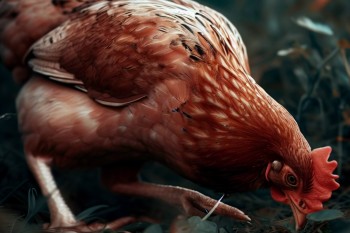Understanding Infectious Bursal Disease (IBD) in
Poultry
Infectious bursal disease (IBD)
is a highly contagious viral disease that affects young chickens, causing
inflammation and destruction of the bursa of Fabricius, an important organ in
the immune system. It is caused by the infectious bursal disease virus (IBDV),
a double-stranded RNA virus belonging to the family Birnaviridae.
Synonyms: Gumboro
disease, infectious avian nephrosis, infectious bursectomy
Etiology: IBDV is a
small, non-enveloped virus that is highly resistant to environmental conditions
and disinfectants. It is transmitted mainly by the oral-fecal route, with
infected birds shedding the virus in their feces and contaminating the
environment. The virus can also be spread indirectly by contaminated feed,
water, equipment, and personnel.
Epidemiology: IBD is a
global disease affecting the poultry industry worldwide. The disease is most
prevalent in developing countries, where poor biosecurity measures and high
stocking densities in poultry farms facilitate the spread of the virus. The
disease is more severe in young birds between 3 and 6 weeks of age, but can
affect birds of any age.
Transmission: The virus
is transmitted mainly by the oral-fecal route, with infected birds shedding the
virus in their feces and contaminating the environment. The virus can also be
spread indirectly by contaminated feed, water, equipment, and personnel.
Pathogenesis: The virus
replicates in the bursa of Fabricius, leading to destruction of the lymphoid
tissue and a subsequent immunosuppressive state. The virus can also spread to
other organs, leading to secondary bacterial infections.
Lesions: The hallmark
lesion of IBD is a swollen, hemorrhagic, and edematous bursa of Fabricius.
Other lesions include congestion and hemorrhage of the kidneys, liver, spleen,
and thymus.
Pathognomic lesions: The
swollen, hemorrhagic, and edematous bursa of Fabricius is a pathognomonic
lesion of IBD.
Signs and symptoms: Clinical
signs of IBD include depression, anorexia, diarrhea, and increased mortality.
In severe cases, birds may exhibit huddling, ruffled feathers, and difficulty
breathing.
Diagnosis: Diagnosis of
IBD is based on clinical signs, gross lesions, and laboratory tests such as
serology, virus isolation, and molecular detection.
Treatment: There is no
specific treatment for IBD, but supportive therapy such as fluid therapy,
antibiotics for secondary bacterial infections, and immunomodulatory drugs may
be used.
Prevention and control:
Prevention and control of IBD involves good biosecurity measures, including
disinfection of premises and equipment, proper disposal of dead birds, and
control of wild birds and rodents. Vaccination is also an effective method of
preventing IBD, with both live and inactivated vaccines available. Vaccination
should be administered at an early age to provide protective immunity before
the onset of clinical disease.


















